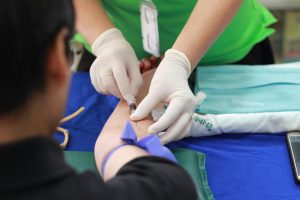
Access to good healthcare has been a long-standing problem for rural communities nationwide.
These areas frequently don’t have enough doctors and nurses, making it hard for people who live there to get the medical attention they require.
This lack of healthcare professionals has become more severe over time, creating a greater need for them.
Due to this high demand, medical professionals have a growing opportunity to make a real difference for people who lack access to care.
Healthcare Challenges in Rural Areas
Rural communities have several unique characteristics that influence healthcare delivery.
Limited access to healthcare facilities, lower population densities, and fewer healthcare providers are just a few of the challenges.
These issues make healthcare delivery more complex in these regions.
According to the US Government Accountability Office, around 60 million Americans live in rural areas.
While many of these individuals are older and generally have severe health conditions, they have limited access to healthcare.
There are many reasons for this, including hospital closure, lack of insurance coverage, and transportation challenges.
Furthermore, rural healthcare providers face difficulties in maintaining a sustainable workforce.
Many healthcare professionals are attracted to urban centers where job opportunities, educational facilities, and amenities are more abundant.
This leaves rural areas struggling to recruit and retain healthcare talent.
Thus, residents of these areas are often required to travel long distances to receive specialized care, which can delay diagnosis and treatment.
The Need for More Healthcare Professionals
The United States is facing a significant shortage of healthcare professionals.
However, this gap widens in rural areas, where 9 in 10 regions are facing a shortage.
In response to these challenges, there has been a concerted effort to increase the number of healthcare professionals in rural communities.
One key solution has been the expansion of training programs and incentives designed to encourage healthcare workers to practice in these areas.
Similarly, online education has enabled many enthusiasts to pursue healthcare professions without traveling to a physical location.
According to Cleveland State University, these programs have 100% online coursework.
Thus, you can enroll in and pass the certification from a rural area.
This can help increase the number of health professionals and reduce the shortage.
For example, there’s a significant demand for nurses in the country.
This is especially true in rural areas, where the population is aging and has limited access to healthcare.
Professionals can enroll in a family nurse practitioner program to care for families in rural communities.
An online family nurse practitioner program allows nurses to gain advanced practice skills while remaining in their communities.
These programs are designed to be flexible and accessible, allowing aspiring nurse practitioners to pursue advanced degrees without having to relocate to urban areas.
The Role of Nurse Practitioners in Rural Healthcare
Nurse practitioners (NPs) have become a crucial part of the healthcare team in rural areas.
Their advanced education enables them to identify and treat illnesses, prescribe medications, and offer preventive medical services.
This makes them an essential resource where doctors may be in short supply.
The biggest development in this space has been the full-practice authority.
According to NurseJournal, nurses are given full practice authority in 29 U.S. states.
Moreover, 12 states have offered reduced-practice authority.
In full-authority states, nurses can practice to the full scope without needing supervision from a physician.
This has paved the way for nurses to bridge the physician shortage in the country.
NPs are often more willing to work in underserved areas, partly because they can develop strong relationships with patients.
They play a crucial role in primary care settings, where they provide much-needed support to family medicine practices.
In many rural areas, NPs are the first line of defense against health issues, offering services like routine check-ups and managing chronic conditions.
Their ability to provide care across a broad spectrum of health concerns means that rural residents can receive comprehensive care.
The Impact of Telemedicine and Technology
Telemedicine has emerged as a powerful tool in improving healthcare access for rural communities.
Thanks to technological advancements, healthcare providers can now diagnose and treat patients remotely, getting around the geographical obstacles that once limited care.
Rural people who used to have to travel far to see a doctor can now have appointments from their own homes.
This is especially helpful for people with ongoing health issues who need regular check-ups and treatment.
Telemedicine has also helped bridge the gap between primary care providers and specialists.
In many rural areas, there is a shortage of specialized care, meaning that patients must travel great distances to receive expert treatment.
Through telemedicine, specialists can connect with patients virtually, offering consultations and guidance to local healthcare providers.
The use of telemedicine increased dramatically during the COVID-19 pandemic.
According to an NCBI study, telehealth appointments were highest in the first quarter of 2020 among rural patients.
However, this declined in 2022 when the pandemic restrictions were lifted.
Active patient portal users also increased by close to 2x times between January 2019 and 2022.
Frequently Asked Questions
How do cultural differences affect healthcare delivery in rural areas?
Rural communities often have distinct cultural norms that influence how residents perceive healthcare.
Some individuals may delay seeking care due to privacy concerns, traditional beliefs, or a lack of trust in medical institutions.
It’s important to understand local customs and how people communicate to build trust and improve patients’ health.
Are there financial incentives for healthcare workers who choose to work in rural settings?
Yes, several state and federal programs offer loan repayment assistance and sign-on bonuses for healthcare workers willing to serve in underserved rural areas.
Initiatives such as the National Health Service Corps (NHSC) offer financial aid for committing to work in remote areas.
What role do community health workers play in rural healthcare?
Community health workers serve as a bridge between patients and healthcare providers.
They often assist with education, outreach, and follow-up care, particularly in areas where there’s a shortage of licensed professionals.
Their understanding of the community allows them to provide support that respects local culture and to improve people’s knowledge about health.
As rural communities continue to struggle with healthcare access, the need for qualified professionals is becoming more and more critical.
By expanding access to education and leveraging technology like telemedicine, it is possible to improve healthcare access and outcomes for these communities.
Nurse practitioners, specifically, are very important in helping to close the gap, providing necessary care, and addressing patients’ needs.
For those looking to make a difference, pursuing an online program offers a pathway to a fulfilling career.








